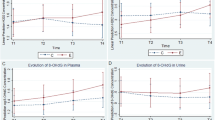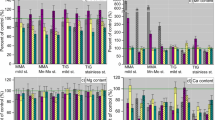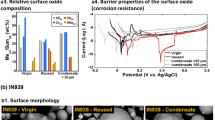Abstract
Purpose
Several existing field studies evaluate aluminium welding works but no thoroughly controlled exposure scenario for welding fume has been described yet. This study provides information about the uptake and elimination of aluminium from welding fumes under controlled conditions.
Methods
In the Aachen Workplace Simulation Laboratory, we are able to generate welding fumes of a defined particle mass concentration. We exposed 12, until then occupationally unexposed participants with aluminium-containing welding fumes of a metal inert gas (MIG) welding process of a total dust mass concentration of 2.5 mg/m3 for 6 h. Room air filter samples were collected, and the aluminium concentration in air derived. Urine and plasma samples were collected directly before and after the 6-h lasting exposure, as well as after 1 and 7 days. Human biomonitoring methods were used to determine the aluminium content of the samples with high-resolution continuum source atomic absorption spectrometry.
Results
Urinary aluminium concentrations showed significant changes after exposure compared to preexposure levels (mean t 1 (0 h) 13.5 µg/L; mean t 2 (6 h) 23.5 µg/L). Plasma results showed the same pattern but pre–post comparison did not reach significance.
Conclusions
We were able to detect a significant increase of the internal aluminium burden of a single MIG aluminium welding process in urine, while plasma failed significance. Biphasic elimination kinetic can be observed. The German BAT of 60 µg/g creatinine was not exceeded, and urinary aluminium returned nearly to baseline concentrations after 7 days.




Similar content being viewed by others
References
Antonini JM, Clarke RW, Krishna Murthy GG, Sreekanthan P, Jenkins N, Eagar TW, Brain JD (1998) Freshly generated stainless steel welding fume induces greater lung inflammation in rats as compared to aged fume. Toxicol Lett 98:77–86
ATSDR (1999) Agency for toxic substances and disease registry. Toxicological profile for aluminium, Atlanta
Bast-Pettersen R, Skaug V, Ellingsen D, Thomassen Y (2000) Neurobehavioral performance in aluminum welders. Am J Ind Med 37:184–192
Botta C et al (2006) Assessment of occupational exposure to welding fumes by inductively coupled plasma-mass spectroscopy and by the alkaline comet assay. Environl Mol Mutagen 47:284–295. doi:10.1002/em.20205
Brand P et al (2013a) Exposure of healthy subjects with emissions from a gas metal arc welding process: part 3–biological effect markers and lung function. Int Arch Occup Environ Health 86:39–45. doi:10.1007/s00420-012-0740-1
Brand P, Havlicek P, Steiners M, Holzinger K, Reisgen U, Kraus T, Gube M (2013b) Exposure of healthy subjects with emissions from a gas metal arc welding process: part 1–exposure technique and external exposure. Int Arch Occup Environ Health 86:25–30. doi:10.1007/s00420-012-0739-7
Comission on hazardous substances (2009) Ausschuss für Gefahrstoffe. Technical rules for hazardous substances TRGS 900 Occupational exposure limit value
Elinder CG, Ahrengart L, Lidums V, Pettersson E, Sjogren B (1991) Evidence of aluminium accumulation in aluminium welders. Br J Ind Med 48:735–738
Fireman E et al (2008) Detection of occult lung impairment in welders by induced sputum particles and breath oxidation. Am J Ind Med 51:503–511. doi:10.1002/ajim.20586
Fishwick D, Bradshaw L, Slater T, Curran A, Pearce N (2004) Respiratory symptoms and lung function change in welders: are they associated with workplace exposures? N Z Med J 117:U872
German Federal Environmental Agency (1998) Umweltbundesamt. Aluminium. Stellungnahme der Komission “Human-Biomonitoring” des Umweltbundesamtes. Bundesgesundheitsblatt Gesundheitsforschung Gesundheitsschutz 41:271
German Research Foundation (2009) The MAK collection of occupational safety and health. Addendum zu aluminium 16. Lieferung
German Research Foundation (2014) MAK and BAT values 2014: maximum concentrations and biological tolerance values at the workplace. Weinheim (Germany): Commission for the investigation of health hazards of chemical compounds in the work area; 2014
German Research Foundation-Fleischer (1980) Deutsche Forschungsgemeinschaft. Analytische Bestimmungen zur Prüfung gesundheitsschädlicher Arbeitsstoffe. Aluminium. 6.Lieferung Ausgabe 1982
Giorgianni CM et al (2014) Neurocognitive effects in welders exposed to aluminium. Toxicol Ind Health 30:347–356. doi:10.1177/0748233712456062
Gube M, Brand P, Schettgen T, Bertram J, Gerards K, Reisgen U, Kraus T (2013) Experimental exposure of healthy subjects with emissions from a gas metal arc welding process–part II: biomonitoring of chromium and nickel. Int Arch Occup Environ Health 86:31–37. doi:10.1007/s00420-012-0738-8
Han SG, Kim Y, Kashon ML, Pack DL, Castranova V, Vallyathan V (2005) Correlates of oxidative stress and free-radical activity in serum from asymptomatic shipyard welders. Am J Respir Crit Care Med 172:1541–1548. doi:10.1164/rccm.200409-1222OC
Hansen KS, Lauritsen JM, Skytthe A (1996) Cancer incidence among mild steel and stainless steel welders and other metal workers. Am J Ind Med 30:373–382. doi:10.1002/(SICI)1097-0274(199610)30:4<373:AID-AJIM1>3.0.CO;2-X
Hartmann L et al (2014) Assessment of the biological effects of welding fumes emitted from metal inert gas welding processes of aluminium and zinc-plated materials in humans. Int J Hyg Environ Health 217:160–168. doi:10.1016/j.ijheh.2013.04.008
Hoet P, Jacquerye C, Deumer G, Lison D, Haufroid V (2013) Reference values and upper reference limits for 26 trace elements in the urine of adults living in Belgium. Clin Chem Lab Med CCLM/FESCC 51:839–849. doi:10.1515/cclm-2012-0688
Human Biomonitoring Commission (2005) Umweltbundesamt Human Biomonitoring Kommission. Normierung von Stoffgehalten im Urin–Kreatinin. Bundesgesundheitsblatt–Gesundheitsforschung–Gesundheitschutz; 48: 616–618
Iarmarcovai G et al (2005) Risk assessment of welders using analysis of eight metals by ICP-MS in blood and urine and DNA damage evaluation by the comet and micronucleus assays; influence of XRCC1 and XRCC3 polymorphisms. Mutagenesis 20:425–432. doi:10.1093/mutage/gei058
Iregren A et al (2001) Effects on the nervous system in different groups of workers exposed to aluminium. Occup Environ Med 58:453–460
Kiesswetter E et al (2007) Longitudinal study on potential neurotoxic effects of aluminium: I. Assessment of exposure and neurobehavioural performance of Al welders in the train and truck construction industry over 4 years. Int Arch Occup Environ Health 81:41–67. doi:10.1007/s00420-007-0191-2
Kiesswetter E, Schaper M, Buchta M, Schaller KH, Rossbach B, Kraus T, Letzel S (2009) Longitudinal study on potential neurotoxic effects of aluminium: II. Assessment of exposure and neurobehavioral performance of Al welders in the automobile industry over 4 years. Int Arch Occup Environ Health 82:1191–1210. doi:10.1007/s00420-009-0414-9
Kilburn KH, Warshaw RH, Boylen CT, Thornton JC (1989) Respiratory symptoms and functional impairment from acute (cross-shift) exposure to welding gases and fumes. Am J Med Sci 298:314–319
Koh DH, Kim JI, Kim KH, Yoo SW (2014) 0371 The relationship between welding fume exposure and chronic obstructive pulmonary disease in shipyard welders in Korea. Occup Environ Med 71 Suppl 1:A46 doi:10.1136/oemed-2014-102362.143
Ljunggren KG, Lidums V, Sjogren B (1991) Blood and urine concentrations of aluminium among workers exposed to aluminium flake powders. Br J Ind Med 48:106–109
Matczak W, Gromiec J (2002) Evaluation of occupational exposure to toxic metals released in the process of aluminum welding. Appl Occup Environ Hyg 17:296–303. doi:10.1080/10473220252826600
Nielsen J, Dahlqvist M, Welinder H, Thomassen Y, Alexandersson R, Skerfving S (1993) Small airways function in aluminium and stainless steel welders. Int Arch Occup Environ Health 65:101–105
Palmer KT, McNeill Love RM, Poole JR, Coggon D, Frew AJ, Linaker CH, Shute JK (2006) Inflammatory responses to the occupational inhalation of metal fume. Eur Respir J 27:366–373. doi:10.1183/09031936.06.00053205
Pierre F, Baruthio F, Diebold F, Biette P (1995) Effect of different exposure compounds on urinary kinetics of aluminium and fluoride in industrially exposed workers. Occup Environ Med 52:396–403
Priest ND (2004) The biological behaviour and bioavailability of aluminium in man, with special reference to studies employing aluminium-26 as a tracer: review and study update. J Environ Monit 6:375–403. doi:10.1039/b314329p
Quanjer PH et al (2012) Multi-ethnic reference values for spirometry for the 3-95-year age range: the global lung function 2012 equations. Eur Respir J 40:1324–1343. doi:10.1183/09031936.00080312
Riihimaki V et al (2000) Body burden of aluminum in relation to central nervous system function among metal inert-gas welders. Scand J Work Environ Health 26:118–130
Riihimaki V, Valkonen S, Engstrom B, Tossavainen A, Mutanen P, Aitio A (2008) Behavior of aluminum in aluminum welders and manufacturers of aluminum sulfate–impact on biological monitoring. Scand J Work Environ Health 34:451–462
Rossbach B et al (2006) Biological monitoring of welders exposed to aluminium. Toxicol Lett 162:239–245. doi:10.1016/j.toxlet.2005.09.018
Schaller KH, Csanady G, Filser J, Jungert B, Drexler H (2007) Elimination kinetics of metals after an accidental exposure to welding fumes. Int Arch Occup Environ Health 80:635–641. doi:10.1007/s00420-007-0176-1
Scharrer E et al (2007) Heart rate variability, hemostatic and acute inflammatory blood parameters in healthy adults after short-term exposure to welding fume. Int Arch Occup Environ Health 80:265–272. doi:10.1007/s00420-006-0127-2
Shirley DG, Lote CJ (2005) Renal handling of aluminium. Nephron Physiol 101:p99–103. doi:10.1159/000088331
Sjogren B, Elinder CG (1992) Proposal of a dose-response relationship between aluminium welding fume exposure and effect on the central nervous system. Med Lav 83:484–488
Sjogren B, Lidums V, Hakansson M, Hedstrom L (1985) Exposure and urinary excretion of aluminum during welding. Scand J Work Environ Health 11:39–43
Sjogren B, Elinder CG, Lidums V, Chang G (1988) Uptake and urinary excretion of aluminum among welders. Int Arch Occup Environ Health 60:77–79
Sjogren B, Iregren A, Frech W, Hagman M, Johansson L, Tesarz M, Wennberg A (1996) Effects on the nervous system among welders exposed to aluminium and manganese. Occup Environ Med 53:32–40
van Haarst EP, Heldeweg EA, Newling DW, Schlatmann TJ (2004) The 24-h frequency-volume chart in adults reporting no voiding complaints: defining reference values and analysing variables. BJU Int 93:1257–1261. doi:10.1111/j.1464-4096.2004.04821.x
Wittczak T, Dudek W, Walusiak-Skorupa J, Swierczynska-Machura D, Cader W, Kowalczyk M, Palczynski C (2012) Metal-induced asthma and chest X-ray changes in welders. Int Arch Occup Environ Health 25:242–250
Acknowledgments
This project was funded by the Statutory Accident Insurance and Prevention in the Woodworking and Metalworking Industry (BGHM), Hannover, Germany. Unrestricted grant to the University Hospital Aachen, RWTH Aachen, RWTH Aachen University, Grant Number 360582.
Conflict of interest
None.
Author information
Authors and Affiliations
Corresponding author
Appendix
Appendix
Time course of the particle number (above) and particle mass concentration (bottom) on a day with low alloyed welding fume exposure. Dashed line represents target particle mass concentration. Line with big amplitude is actual particle mass concentration. Line with small amplitude is median particle mass concentration
Rights and permissions
About this article
Cite this article
Bertram, J., Brand, P., Hartmann, L. et al. Human biomonitoring of aluminium after a single, controlled manual metal arc inert gas welding process of an aluminium-containing worksheet in nonwelders. Int Arch Occup Environ Health 88, 913–923 (2015). https://doi.org/10.1007/s00420-015-1020-7
Received:
Accepted:
Published:
Issue Date:
DOI: https://doi.org/10.1007/s00420-015-1020-7






